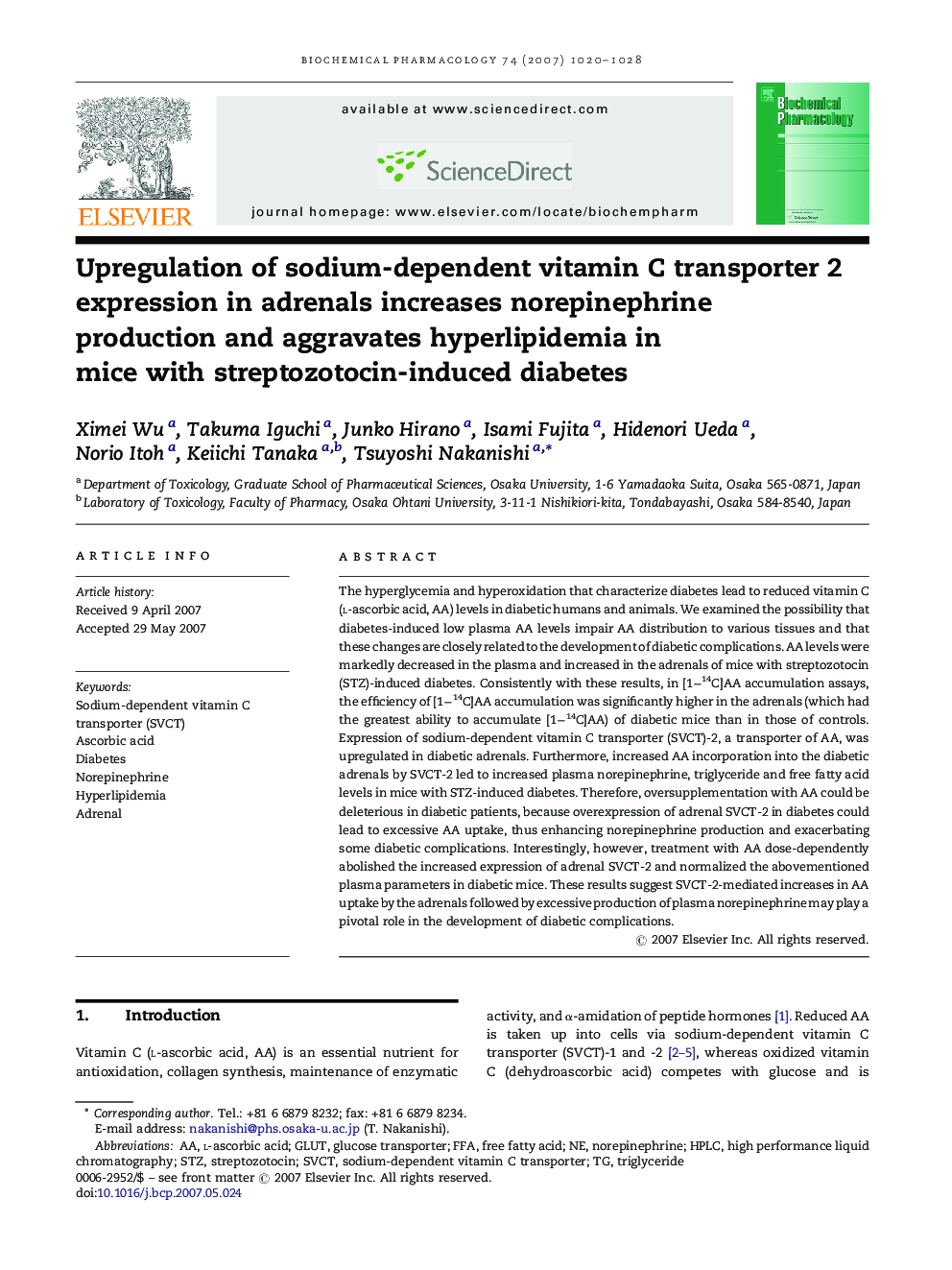| Article ID | Journal | Published Year | Pages | File Type |
|---|---|---|---|---|
| 5824285 | Biochemical Pharmacology | 2007 | 9 Pages |
Abstract
The hyperglycemia and hyperoxidation that characterize diabetes lead to reduced vitamin C (l-ascorbic acid, AA) levels in diabetic humans and animals. We examined the possibility that diabetes-induced low plasma AA levels impair AA distribution to various tissues and that these changes are closely related to the development of diabetic complications. AA levels were markedly decreased in the plasma and increased in the adrenals of mice with streptozotocin (STZ)-induced diabetes. Consistently with these results, in [1â14C]AA accumulation assays, the efficiency of [1â14C]AA accumulation was significantly higher in the adrenals (which had the greatest ability to accumulate [1â14C]AA) of diabetic mice than in those of controls. Expression of sodium-dependent vitamin C transporter (SVCT)-2, a transporter of AA, was upregulated in diabetic adrenals. Furthermore, increased AA incorporation into the diabetic adrenals by SVCT-2 led to increased plasma norepinephrine, triglyceride and free fatty acid levels in mice with STZ-induced diabetes. Therefore, oversupplementation with AA could be deleterious in diabetic patients, because overexpression of adrenal SVCT-2 in diabetes could lead to excessive AA uptake, thus enhancing norepinephrine production and exacerbating some diabetic complications. Interestingly, however, treatment with AA dose-dependently abolished the increased expression of adrenal SVCT-2 and normalized the abovementioned plasma parameters in diabetic mice. These results suggest SVCT-2-mediated increases in AA uptake by the adrenals followed by excessive production of plasma norepinephrine may play a pivotal role in the development of diabetic complications.
Keywords
Related Topics
Health Sciences
Pharmacology, Toxicology and Pharmaceutical Science
Pharmacology
Authors
Ximei Wu, Takuma Iguchi, Junko Hirano, Isami Fujita, Hidenori Ueda, Norio Itoh, Keiichi Tanaka, Tsuyoshi Nakanishi,
